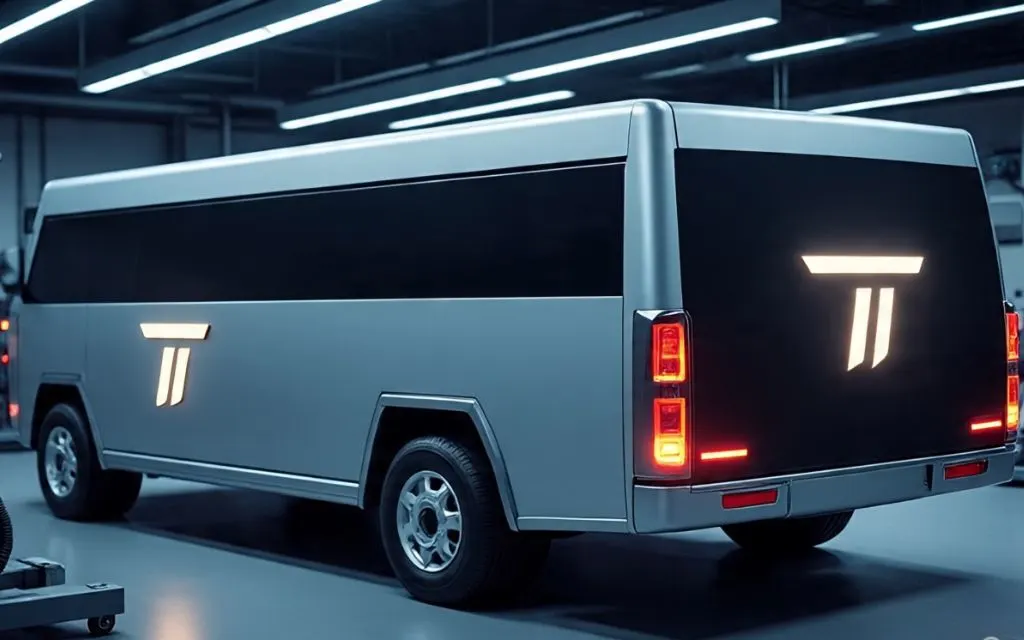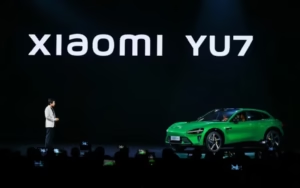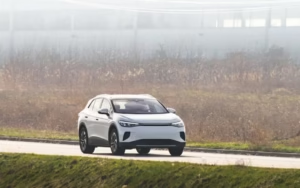In recent years, commercial vehicle technology has undergone a major transformation, changing how businesses manage their transportation needs. From electric commercial vehicles to autonomous trucks, the transport industry is witnessing groundbreaking innovations. Companies are now embracing advanced solutions to improve safety, reduce costs, and boost operational efficiency. The use of commercial vehicle technology is no longer optional; it has become a critical part of logistics, delivery, and transportation sectors across the globe.
This article will explore the world of commercial vehicle technology, discussing its evolution, current trends, and the future of this rapidly growing field. We will also highlight how businesses can benefit from adopting the latest advancements in commercial vehicle technology.
What is Commercial Vehicle Technology?
Commercial vehicle technology refers to the collection of advanced tools, systems, and solutions used to enhance the performance, safety, and efficiency of vehicles used in business operations. These vehicles include trucks, delivery vans, buses, trailers, and other transport vehicles that move goods or passengers for commercial purposes.
In the past, commercial vehicles were simple machines powered by combustion engines with limited technological features. Today, commercial vehicle technology integrates software, sensors, real-time data analysis, automation, and even artificial intelligence to optimize logistics and transportation. This shift helps businesses manage their fleets better, lower fuel costs, improve safety, and comply with environmental standards.
Some of the most common features of commercial vehicle technology include:
- Electric commercial vehicles that reduce emissions and cut fuel expenses
- Fleet management systems for tracking and optimizing vehicle usage
- Telematics in logistics for monitoring routes, driver behavior, and cargo conditions
- Advanced driver assistance systems (ADAS) to prevent accidents and improve road safety
- Predictive maintenance tools that reduce breakdowns and improve vehicle longevity
As commercial vehicle technology continues to evolve, companies must adapt to these changes to stay competitive and meet the demands of modern logistics. Adopting these technologies allows businesses to streamline operations, enhance customer service, and reduce operational risks.
The Rise of Electric Commercial Vehicles
One of the most significant advancements in commercial vehicle technology is the rise of electric commercial vehicles. These vehicles are powered by electricity rather than traditional diesel or petrol, helping companies reduce their environmental footprint while saving on fuel costs.
Governments around the world are implementing stricter emission regulations, forcing industries to look for cleaner alternatives. Electric commercial vehicles are quickly becoming the solution, as they produce zero tailpipe emissions and operate much more quietly than combustion engine vehicles. This is especially beneficial in urban areas where air quality and noise pollution are growing concerns.
Manufacturers such as Tesla, Volvo, Mercedes-Benz, and Rivian are leading the way by introducing electric commercial vehicles that offer longer driving ranges, improved battery technology, and faster charging options. Some of the benefits of switching to electric commercial vehicles include:
- Reduced operational costs due to lower fuel and maintenance expenses
- Contribution to corporate sustainability goals and reduced carbon footprint
- Access to government incentives, tax breaks, and grants for eco-friendly fleets
- Enhanced public image by adopting green transportation solutions
While the initial purchase price of electric commercial vehicles can be high, long-term savings and environmental benefits make them an attractive investment for businesses. As battery technology improves, commercial vehicle technology will continue to push toward a future dominated by electric solutions.

The Role of Fleet Management Systems in Modern Transportation
Fleet management systems have become essential in the world of commercial vehicle technology. These systems use a combination of software and hardware to monitor, manage, and optimize an entire fleet of vehicles. Whether a company operates delivery trucks, service vans, or long-haul freight carriers, fleet management systems provide the tools needed to keep operations running smoothly.
A typical fleet management system includes GPS tracking, real-time vehicle monitoring, maintenance scheduling, fuel consumption tracking, and driver performance analysis. With these capabilities, businesses can make informed decisions that improve efficiency and reduce costs.
Some key benefits of fleet management systems in commercial vehicle technology include:
- Real-time tracking: Managers can see where each vehicle is at any time, allowing for better coordination and route optimization.
- Driver behavior monitoring: The system tracks speeding, harsh braking, idling, and other behaviors to improve safety and reduce wear and tear.
- Maintenance alerts: Predictive alerts help prevent breakdowns by notifying operators when maintenance is due.
- Fuel management: By analyzing routes and driving habits, businesses can cut down on unnecessary fuel use.
- Regulatory compliance: Digital logbooks and automated reporting help companies comply with transportation and safety regulations.
The integration of fleet management systems with telematics in logistics is a game changer. By combining data from multiple sources, managers gain deeper insights into fleet operations. This allows for smarter planning, reduced downtime, and improved customer satisfaction. As commercial vehicle technology continues to evolve, fleet management systems will become even more advanced, incorporating artificial intelligence and machine learning for even better performance.
The Growth of Telematics in Logistics
Telematics in logistics is a vital part of modern commercial vehicle technology, enabling businesses to collect and analyze real-time data from their vehicles. Telematics combines GPS technology, onboard diagnostics, wireless communications, and advanced software to provide valuable insights into vehicle operations, driver behavior, and cargo management.
The primary function of telematics in logistics is to track the location and status of commercial vehicles. However, the applications go far beyond simple GPS tracking. Telematics systems collect data on fuel efficiency, engine health, tire pressure, load weights, and even the temperature of cargo in refrigerated trucks.
Some of the ways telematics in logistics enhances commercial vehicle technology include:
- Real-time route optimization: Traffic data and road conditions are analyzed to suggest the most efficient delivery routes, saving time and reducing fuel usage.
- Driver safety monitoring: Telematics tracks behaviors like hard braking, rapid acceleration, and lane departures, allowing for driver coaching and training.
- Cargo tracking and security: Sensitive or high-value shipments can be monitored in real time, ensuring they arrive at the right place, on time, and in good condition.
- Compliance management: Telematics helps businesses comply with regulations by automatically recording hours of service and maintenance records.
- Data-driven decision-making: With access to detailed reports and analytics, companies can make smarter operational choices, from fuel purchases to vehicle replacement.
By adopting telematics in logistics, businesses gain better control over their supply chains, reduce operational risks, and improve service delivery. The integration of telematics with other commercial vehicle technology systems, such as fleet management systems and advanced driver assistance systems (ADAS), creates a powerful ecosystem that drives efficiency and performance across the entire transportation process.
The Development of Autonomous Trucks
One of the most revolutionary advancements in commercial vehicle technology is the development of autonomous trucks. These self-driving vehicles are equipped with advanced sensors, radar, cameras, and artificial intelligence systems that enable them to navigate roads with minimal or no human input. Autonomous trucks represent the next frontier in logistics and long-haul transportation.
Companies such as Waymo, Tesla, Embark, and Aurora are leading the way in testing and refining autonomous trucks. These vehicles are designed to handle highway driving, freight transportation, and repetitive routes where human fatigue often becomes an issue. By integrating autonomous trucks into the supply chain, businesses can improve efficiency, reduce labor costs, and enhance safety on the roads.
Some of the key benefits of using autonomous trucks in commercial vehicle technology include:
- Continuous operation: Unlike human drivers who need rest, autonomous trucks can operate 24/7, significantly speeding up deliveries.
- Improved safety: Advanced sensors and AI allow autonomous trucks to detect hazards, maintain safe distances, and react faster than human drivers in many situations.
- Labor shortage solution: The trucking industry faces a driver shortage, and autonomous trucks help address this gap by reducing dependency on human drivers.
- Cost savings: Reducing the need for driver salaries and optimizing fuel use leads to substantial long-term savings.
Although full-scale deployment of autonomous trucks is still in progress due to regulatory and technical challenges, the future of commercial vehicle technology will undoubtedly include widespread use of self-driving vehicles.
The Importance of Advanced Driver Assistance Systems (ADAS)
Advanced driver assistance systems (ADAS) are a crucial part of modern commercial vehicle technology, playing a key role in reducing road accidents and improving driver safety. These systems use sensors, cameras, radar, and artificial intelligence to assist drivers in real-time. By helping drivers avoid collisions and maintain better control of the vehicle, ADAS makes roads safer for everyone.
Some common ADAS features include:
- Lane departure warnings: Alerts the driver when the vehicle starts to drift out of its lane without signaling.
- Automatic emergency braking: Detects obstacles and applies the brakes automatically to prevent collisions.
- Adaptive cruise control: Adjusts the vehicle’s speed to maintain a safe distance from the car ahead.
- Blind-spot detection: Warns drivers of vehicles in their blind spots to prevent side collisions.
- Driver fatigue monitoring: Uses cameras and sensors to detect signs of drowsiness or distraction.
The integration of ADAS into commercial vehicle technology not only improves safety but also reduces costs related to accidents, insurance claims, and vehicle downtime. Many insurance companies offer reduced premiums for fleets equipped with ADAS, recognizing their role in lowering accident rates. As technology progresses, ADAS will continue to evolve, offering more advanced features and further enhancing safety on the roads.
Environmental Impact of Commercial Vehicle Technology
The global transportation sector is responsible for a significant portion of greenhouse gas emissions. However, commercial vehicle technology is helping reduce the environmental impact of logistics and freight operations. The introduction of electric commercial vehicles, improved fuel efficiency systems, and advanced routing software all contribute to a greener, more sustainable transportation industry.
Here are some of the ways commercial vehicle technology is promoting environmental sustainability:
- Electric commercial vehicles: These vehicles produce zero tailpipe emissions, reducing air pollution and cutting down on fossil fuel consumption.
- Fuel-efficient engines and systems: Modern diesel engines are more efficient and produce fewer emissions than older models, thanks to improvements in commercial vehicle technology.
- Route optimization: Fleet management systems and telematics in logistics help plan shorter and faster routes, reducing fuel use and minimizing idle time.
- Driver training and monitoring: By analyzing driving behavior, businesses can train drivers to operate vehicles more efficiently, further cutting emissions.
- Predictive maintenance: Regular upkeep reduces emissions by ensuring engines and other vehicle components are running at peak efficiency.
Governments around the world are also supporting the shift to greener commercial vehicle technology by offering incentives, grants, and tax credits to businesses that adopt electric commercial vehicles or upgrade to more eco-friendly fleets. This focus on sustainability is shaping the future of transportation, pushing companies to prioritize environmentally responsible logistics solutions.
Data Analytics and Predictive Maintenance in Commercial Vehicle Technology
One of the biggest advantages of modern commercial vehicle technology is its ability to collect and analyze data from every part of a vehicle’s operation. From engine performance and fuel usage to driver behavior and cargo conditions, today’s trucks and vans are essentially rolling data centers.
Predictive maintenance is a standout feature in this data-driven landscape. Instead of relying on traditional maintenance schedules, predictive maintenance uses real-time data to forecast when parts will need servicing or replacement. This approach reduces costly breakdowns and extends the lifespan of vehicles.
Key benefits of data analytics and predictive maintenance in commercial vehicle technology include:
- Reduced downtime: Identifying potential issues before they cause a failure helps avoid unexpected breakdowns that delay deliveries.
- Cost savings: Preventive repairs are usually less expensive than emergency fixes. Businesses can plan for maintenance during off-peak times to minimize disruptions.
- Improved vehicle health: Monitoring components like brakes, tires, and engines ensures that fleets stay in optimal condition.
- Driver safety: Predictive analytics can identify unsafe driving habits or mechanical issues that might lead to accidents.
- Compliance and reporting: Automated data collection helps businesses comply with regulations by maintaining accurate vehicle records.
As commercial vehicle technology evolves, the use of artificial intelligence and machine learning will further improve predictive maintenance. Vehicles will become smarter, capable of self-diagnosing problems and even ordering replacement parts automatically. This level of automation is expected to be a game changer for fleet operations.
Challenges Facing the Adoption of Commercial Vehicle Technology
While commercial vehicle technology offers numerous benefits, adopting it comes with challenges that businesses must navigate carefully. Understanding these challenges is crucial for companies planning to modernize their fleets.
Some of the main obstacles include:
- High initial costs: Upgrading fleets with the latest commercial vehicle technology, such as electric commercial vehicles, autonomous trucks, and fleet management systems, requires significant investment. Small and medium-sized businesses may find these costs difficult to manage without financial assistance or incentives.
- Training and education: Drivers, mechanics, and managers need training to use new systems effectively. Learning to operate and maintain advanced technologies can require time and resources.
- Infrastructure limitations: For electric commercial vehicles, charging infrastructure is still developing in many regions. Similarly, autonomous trucks require well-mapped routes and advanced road systems to function properly.
- Cybersecurity risks: With more vehicles connected to the internet through telematics in logistics and cloud-based systems, data security becomes a top concern. Protecting sensitive data from cyberattacks is a growing challenge.
- Regulatory uncertainties: Laws governing autonomous trucks, data privacy, and environmental standards vary between regions and are still evolving, creating legal complexities for companies operating across borders.
Despite these hurdles, the long-term benefits of adopting commercial vehicle technology outweigh the challenges. With careful planning and strategic investment, businesses can overcome these barriers and position themselves for future success.
The Future of Commercial Vehicle Technology
The future of commercial vehicle technology is bright, with rapid advancements set to transform the transportation and logistics industry even further. As technology continues to evolve, new trends and innovations will shape how goods and services are delivered.
Some emerging trends to watch include:
- Next-generation electric commercial vehicles: Battery technology will improve, offering longer ranges and faster charging, making electric commercial vehicles more practical for long-haul operations.
- Increased use of autonomous trucks: As regulations catch up with technology, autonomous trucks will become a common sight on highways, particularly for repetitive long-distance routes.
- Integration of artificial intelligence: AI will enhance fleet management systems, providing real-time decision-making support for route planning, maintenance, and driver performance.
- Augmented reality (AR) and virtual training: AR technology will assist in driver training and vehicle repairs, reducing errors and improving efficiency.
- Enhanced connectivity and IoT integration: More vehicles will be connected to the Internet of Things (IoT), enabling seamless communication between vehicles, infrastructure, and logistics platforms.
As commercial vehicle technology continues to advance, businesses that stay informed and adopt the latest innovations will gain a competitive edge. The future will be defined by smarter, safer, and more sustainable transportation systems that benefit companies, consumers, and the environment alike.
Conclusion
Commercial vehicle technology is transforming the way companies manage transportation and logistics. From electric commercial vehicles and autonomous trucks to telematics in logistics and advanced driver assistance systems (ADAS), the innovations in this field are reshaping the industry.
By adopting modern commercial vehicle technology, businesses can improve safety, reduce operating costs, and contribute to a cleaner environment. Although challenges remain, the long-term benefits of these technologies make them a smart investment for companies of all sizes.
As technology continues to advance, commercial vehicle technology will play an even greater role in shaping the future of transportation. Companies that stay informed and embrace these changes will be better positioned to succeed in an increasingly competitive market.






